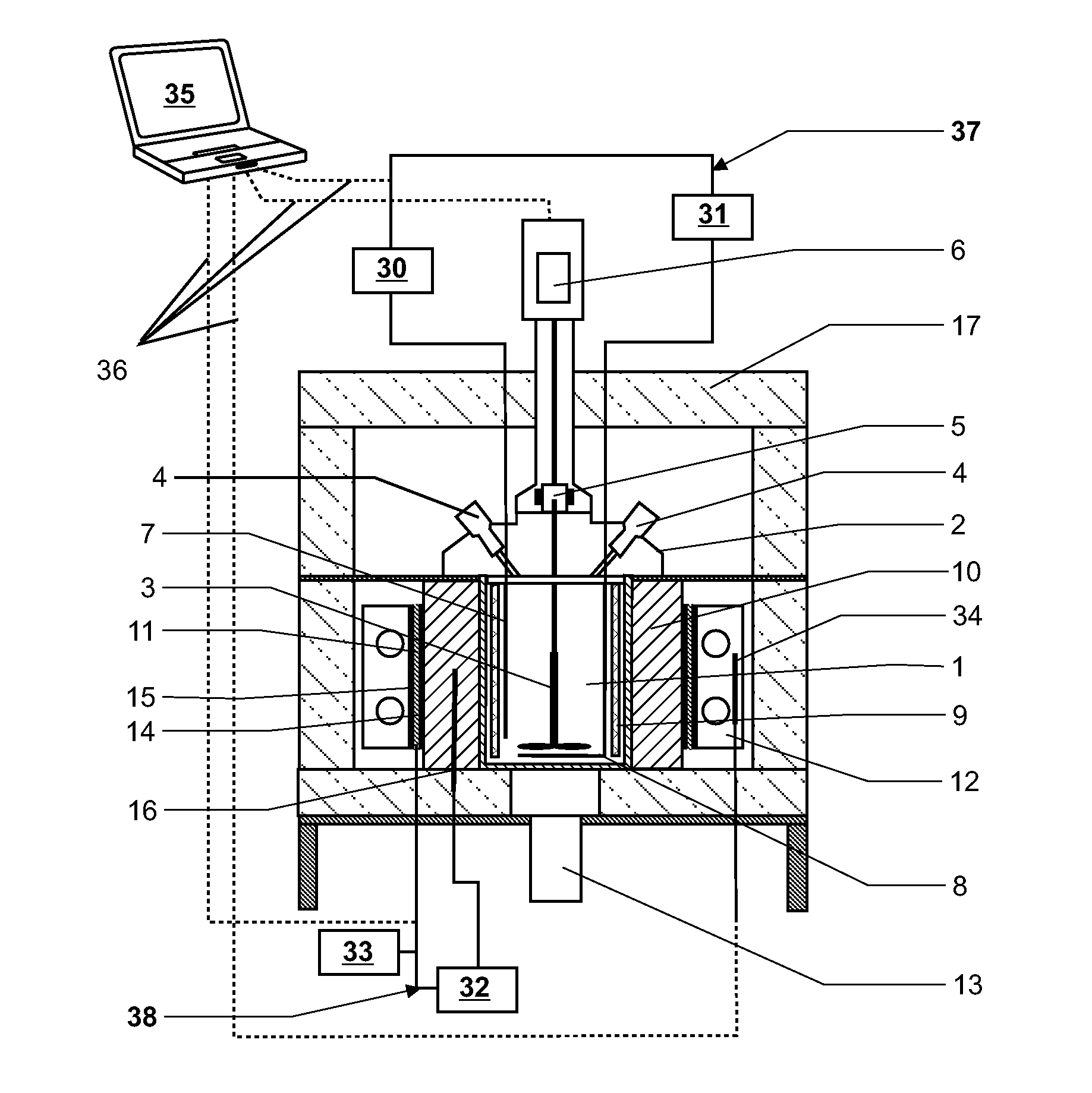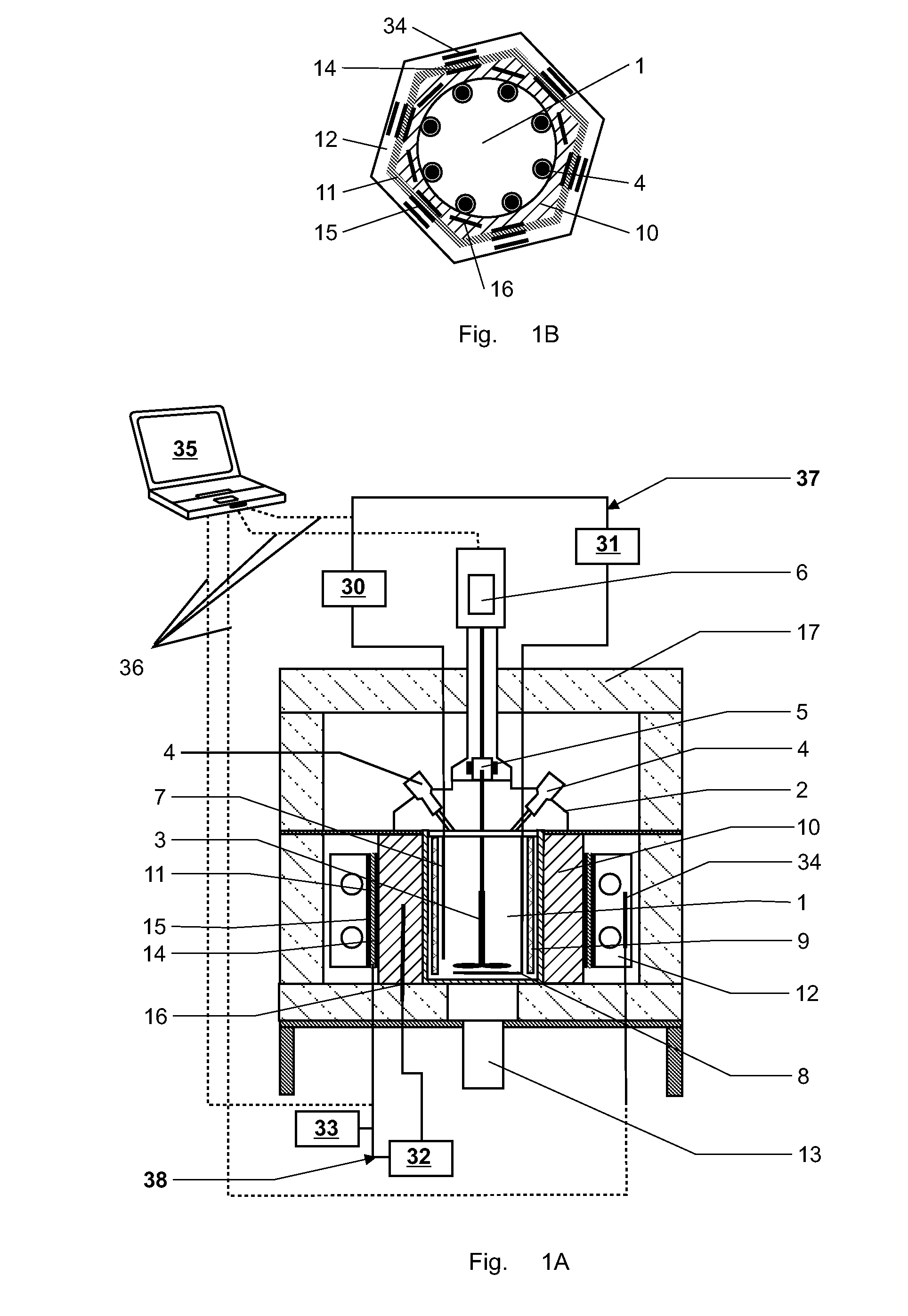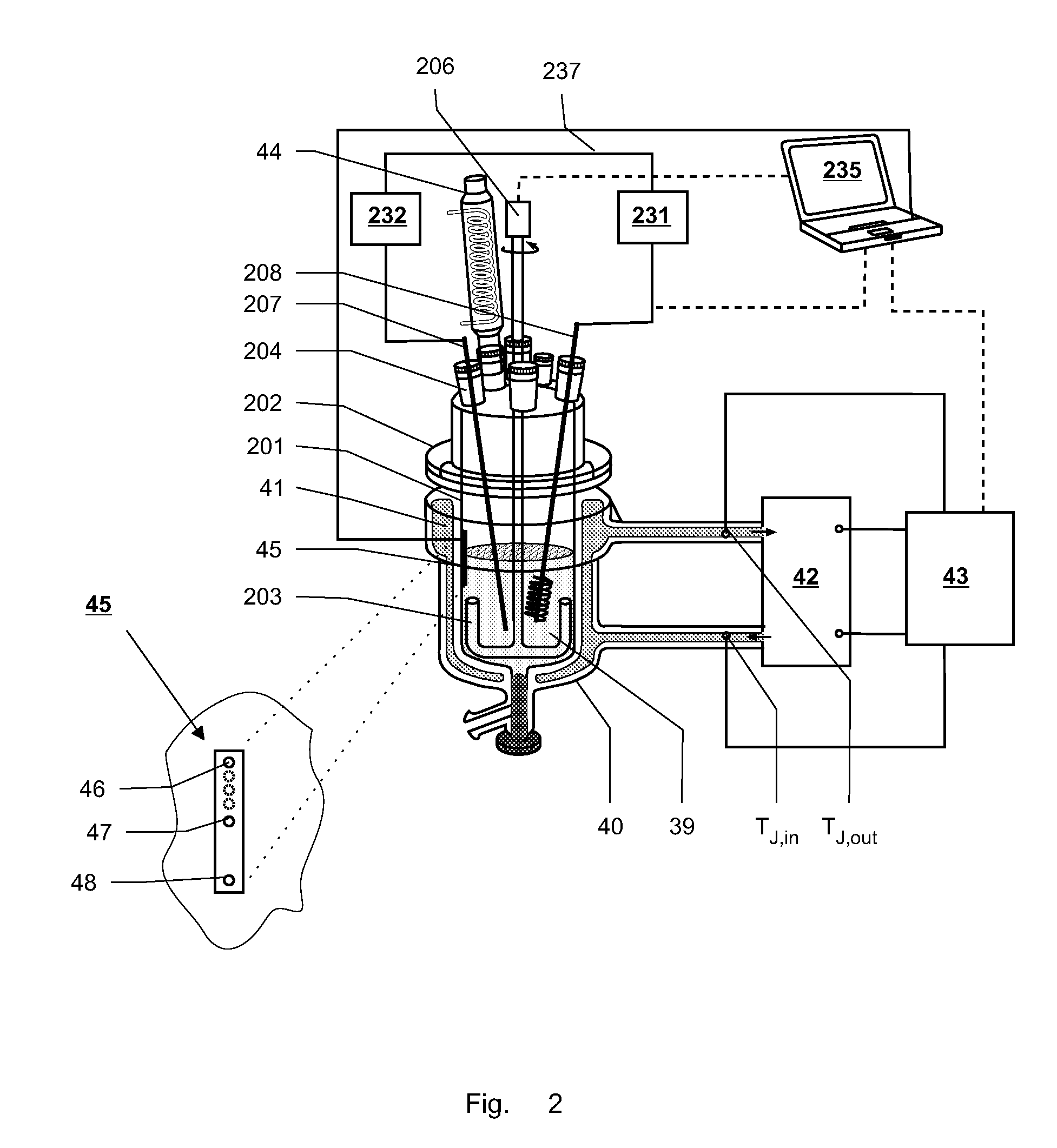Method and device for determining specific heat capacity
a technology of specific heat capacity and heat transfer rate, which is applied in the direction of heat measurement, material heat development, instruments, etc., can solve the problems of inhomogeneity of samples, high labor intensity, and high labor intensity of labor intensity, and achieve the effect of great accuracy
- Summary
- Abstract
- Description
- Claims
- Application Information
AI Technical Summary
Benefits of technology
Problems solved by technology
Method used
Image
Examples
example 1
[0077]In a first experiment the reactor was filled with 34 ml of water. The jacket temperature TJ was set to 17° C. and the temperature of the heat exchanger to 15° C. Both temperatures were kept at a constant value throughout the experiments. The stirrer speed was 500 rpm.
[0078]The reaction temperature Tr was superimposed with a modulated energy profile in form of an oscillating set-temperature provided by the compensation heater. This modulation resulted in a reaction temperature profile of
Tr=25+0.5·cos(t120)[°C.],[12]
with t being the time constant expressed in seconds [s]. This modulated temperature profile corresponds to an oscillating period of about 2 min and an amplitude of about ±0.5° C. The amplitude can vary slightly due to a delay in the response time of the temperature controller of the compensation heater. In the case of the calorimeter described in FIG. 1 it equals about ±0.52° C.
[0079]For simulating a reaction and providing a power due to dosing additional water was a...
example 2
[0090]In a second experiment the reactor was first filled with 25 ml of water and the temperature of the reactor Tr was set to 25° C. A step function was then applied to the compensation heater qcomp as modulated energy profile. Each step comprised an increase in reaction temperature Tr of 0.8° C. and lasted for about 10 minutes.
[0091]The jacket temperature TJ was set to 20° C. and the temperature of the heat exchanger to 10° C. After 60 min, water was added with a flow rate of 0.125 ml / min until a total volume of 50 ml was reached after 260 min. The stirrer speed was set to 500 rpm.
[0092]The total heat capacities have been calculated every 20 minutes.
[0093]In case of the step function, the modulation can be expressed as:
X~i=Xi,0+∑n=1jBi,nexp(-λi,n·t)[16]
where j is the order of the signal i. It could be determined experimentally that for the calorimeter and the experiment described above the order equals j=1 and equation 16 can be rewritten as:
Xi=Xi,0+Bi,1exp(−λi,1·t) [17]
[0094]As ...
PUM
 Login to View More
Login to View More Abstract
Description
Claims
Application Information
 Login to View More
Login to View More - R&D
- Intellectual Property
- Life Sciences
- Materials
- Tech Scout
- Unparalleled Data Quality
- Higher Quality Content
- 60% Fewer Hallucinations
Browse by: Latest US Patents, China's latest patents, Technical Efficacy Thesaurus, Application Domain, Technology Topic, Popular Technical Reports.
© 2025 PatSnap. All rights reserved.Legal|Privacy policy|Modern Slavery Act Transparency Statement|Sitemap|About US| Contact US: help@patsnap.com



